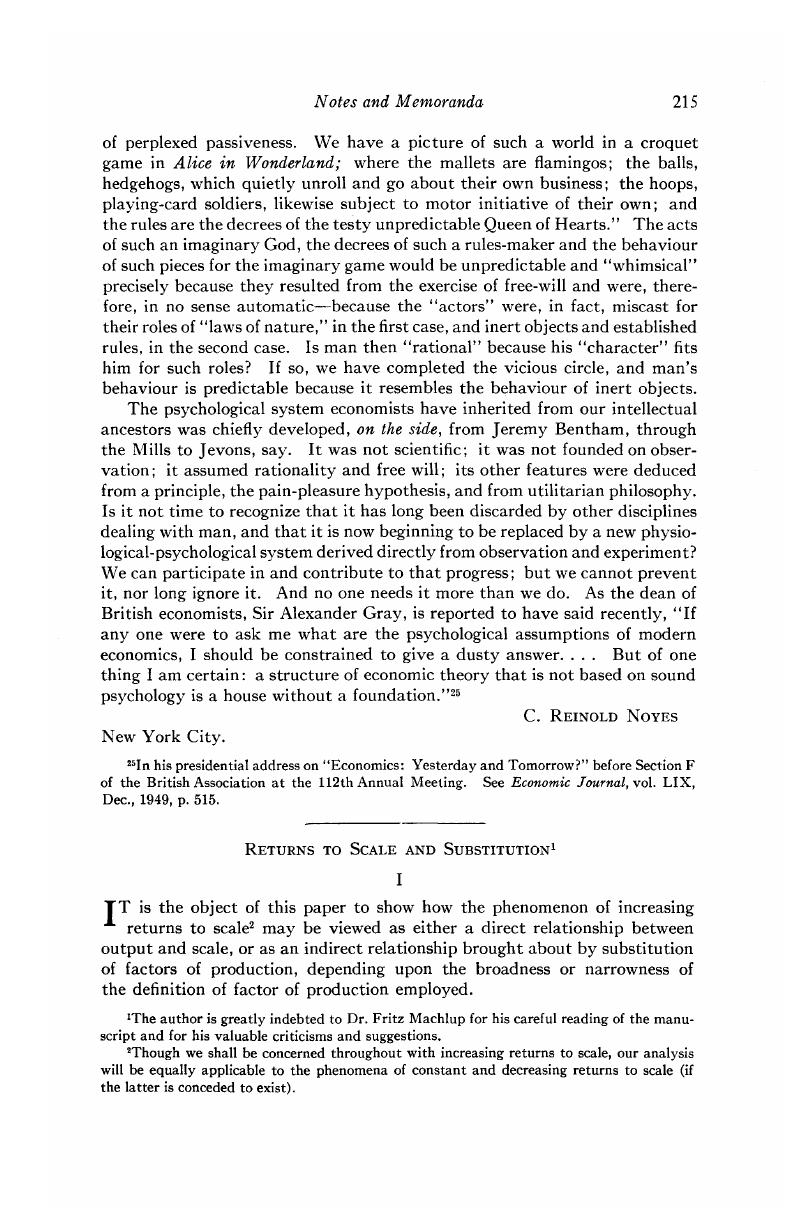No CrossRef data available.
Published online by Cambridge University Press: 07 November 2014

The author is greatly indebted to Dr. Fritz Machlup for his careful reading of the manuscript and for his valuable criticisms and suggestions.
2 Though we shall be concerned throughout with increasing returns to scale, our analysis will be equally applicable to the phenomena of constant and decreasing returns to scale (if the latter is conceded to exist).
3 We shall assume throughout this paper, for simplicity, that there is no entrepreneurship.
4 In the concept of a “bundle” or a “dose” it is to be remembered that the elements forming the bundle must be present in each bundle in the same form and in the same proportions, in order that the bundle may be regarded as a homogeneous unit of input.
5 It is here assumed that the old factor is divisible. It would be possible to assume old factor indivisible beyond a certain point, in which case it would be necessary to draw equidistant horizontal lines perpendicular to the ordinate. However the confusion added by such a procedure would far exceed the added generality, if any.
6 These assumptions are by no means necessary: they are made merely to simplify the exposition.
7 Since old and new factor are measured in terms of actual factor, this path is a straight line through the origin. The necessity for this shape ceases to exist if a broader definition is employed.
8 By the time a 2 is reached it may of course be necessary to substitute the new factor by a still newer factor.
9 As a special case, Figure 3 might have been so drawn such that ON = O and OM = OC. resulting in complete substitution. There is, however, complete substitution of NB 2 by OM 2.